Solar wonders (02) --- The sun, our star.
My last STEM-related article titled A brief overview of the solar system (01) was the beginning of a new series about the cosmos and in particular, our solar system. We took a brisk walk through the solar system and came to terms with the general features that are common to the planets alone, and as well were introduced to the Laplace hypothesis of the solar system's beginning.
Needless to say, the contribution and feedback from real readers were quite low. I had 4 comments in total, 2 from bots, which was fantastic -in a way. However, that was just the start of the series, and it's all basic stuff that every individual should eventually know anyway. Regardless of where we function -in science or the arts-, our knowledge about the solar system is consistently being updated since we first put a man in orbit in 1961, and understanding a bit more about your place in the universe wouldn't hurt at all. After all, like famous astronomer Carl Sagan would say; "we are made of star-stuff."
I'll include the link to the previous article again at the end of this post for interested readers. Thank you.
I'd like to start off today by discussing the single most important entity in our immediate cosmos; The Sun. Yup, I termed it 'most-important' because I think it is, and the combination of everything in our home planet and around its immediate space must have been called the Solar system for a reason, right?
So, what if I told you that the sun contains between 98% to 99.9% of every matter in the whole solar system? think about that for a moment, there is the possibility that everything you've come to know and hear about, including all of the matter on the moon, asteroids and the other planets probably isn't up to 1% of the total matter in the solar system. Intriguing, isn't it?
How about if I told you that the sunlight reaching you today started it's journey some 100,000 years ago from the center of the sun? Would you fathom that?

What is 'Sun'?
Maybe a nerdy way of reciting the traditional Twinkle Twinkle little star rhyme would be simply doing away with the 'star' and conveniently replacing it with the word 'sun' in there. Would be fun, in a way, but it might as well make things even more complicated than it is at the moment because we have numerous other stars that aren't called 'sun'.
Unlike the misconceptions we have about stars and twinkling, stars do not twinkle at all. They're so bright that we could see them shining at night from millions upon millions of miles away. the 'twinkle' we get are simple obstructions like gases from our earth's atmosphere that becloud our vision as they flow. We do not see these gases, but as they momentarily get in the way, we say the star twinkles.
Our sun holds wonders, and one simply cannot have a nice day without it. In fact, we probably wouldn't even use the word 'day' if it weren't for the sun. It is super important to our being, so much that all of life depends on the sun for energy!
The Sun has always been a target for stories and myths in the various cultures and traditions of the ancient times. In fact, the name 'sun' has its origin deeply rooted in the Latin word 'sol', which is just another name for the greek-worshipped solar deity Helios. However, the English variation 'sun' was derived from the German word sunnǭ. Wiki
The sun is a star. And according to Laplace's Nebula hypothesis, stars are created when interstellar dust and space clouds forming at a place collect and contract in under their own gravity to form a nebula. Over time most of the matter continues to fall towards the center until the phenomenon grows dense and big enough to give off an extraordinary amount of radiant energy. This is how the sun was born, and the process could take billions of years to complete.
Even with a massive 1.35 million kilometres in diameter, our sun isn't ranked as the biggest or brightest star in the cosmos. It is rather average in size, mass, surface temperature and brightness when compared to other stars, and is the only star in our solar system. Our sun contains over 333,000 times the mass of the earth and is the center of the solar system with the nine (9) planets, moons, and space debris moving in their orbits around it, all held close by its strong gravitational pull.
Like all other stars in the universe, the sun gives off a huge amount of energy as heat, photon (light) and radiation by a process called nuclear fusion. The temperature at its surface is over 6000K. Unlike your regular chemical changes like burning, for example, where chemical bonds between atoms are broken, and heat and light is given off by the consumption of a material as fuel, Nuclear fusion is the conversion of a form of matter to create totally new elements by affecting the nucleus of the parent atom itself. It is the tearing-apart of a nucleus into its constituent particles, in which a substantial amount of energy is always given off!

Fusion in the sun ---- Careful, slippery math floor!
There's a bit of alchemy in the way our sun derives its energy. Its most important constituent is Hydrogen, which makes 3/4 the mass of the sun and is its source of fuel. To explain fusion in the sun, we'll refer to Albert Einstien's special theory of relativity postulated in 1905. In this theory, Einstein implied that matter and energy are 'mutually interconvertible'. which means that matter can be converted to energy and vice versa. This is mathematically expressed by the equation:
E = mc2
Where:
m = mass
E = energy
c = speed of light.
Already, we know c to be a large number 3 x 108m/s or more precisely, 299 792 458 meters per second. Then we take the square of that. Intuitively observing the equation, we'd realize that a small mass value m multiplying c to give energy would result in an even larger value.
The mechanism involves the fusion of the nuclei of Hydrogen to create Helium is called the Proton-proton chain reactionWiki and is accompanied by the release of energy. The first step of the nuclear process is represented below as:
4H → He + energy.
Considering the description of the atom from basic chemistry class, we might recall that the nucleus of a hydrogen atom has just a single proton while the nucleus of a Helium atom has 2 protons and 2 neutrons. Unlike protons with positive charges, the neutron has no electrical charge at all. Hence, it simply serves as buffers between protons in an atom. Because of that, both proton and neutron have essentially the same mass. These two make up the nucleus of an atom with the electron circling outside.
So, from the equation of reaction above, 2 protons from the 4 Hydrogen atoms would be transmuted to deuterium, which is accompanied by the release of 2 **positively charged electrons ** called Positrons, and 2 energy-carrying particles called neutrinos.
Weird, isn't it? to think that an electron could be positively charged. However, the positrons are so called because they carry the positive charges left over by the protons during conversion.
So the reaction continues and the deuterium nucleus is then struck by another proton to create a helium-3 nucleus, and give off energy as light (gamma ray) in the second step. This helium -3 nucleus then collides with another helium-3 nucleus to make the final helium-4 nucleus, which is a complete Helium atom. This final stage also gives off 2 free proton particles (which could continue the process) and energy as light (gamma ray).
So, in all, we have four basic particles working to keep the whole process intact by conserving energy, electrical charge, and momentum: the proton; neutron, positron, and neutrinos. The deuterium is simply the combination of 2 protons.
By simple subtraction of the masses, we find that a small amount of the reacting matter (Hydrogen) is lost to the surrounding, and that the total mass of the reactant is slightly higher than the end product (a single Helium nucleus).
4H: 6.693 x 10-27kg
-He: 6.645 x 10-27kg
lost mass: 0.048 x 10-27kg.
That's an incredibly small value for mass, and it's okay since we're focusing on the creation of a single atom of Helium. By applying Einstein's relativity equation and imputing this value for "m", we find that this mass loss is how the sun's energy is derived!
E = mc2
------------ E = (0.048 x 10-27kg) (3 x 108m/s)2
------------ E = 4.3 x 10-12joule.
That's energy with a lot of zeroes before significant numbers, which is still small. However, we considered the creation of a single atom of Helium from a single atom of Hydrogen right? things become pretty massive as the amount of Hydrogen involved gets bigger. The sun's total power output (i.e: its luminosity) is 3.9 x 1026L. Such a gigantic amount of energy would take the fusion of 6 x 1011kg of hydrogen into helium every second! To better understand how massive it is, the fusion of as little as 0.00001 gram of hydrogen packs enough energy to power everything in a standard home for well over a year!
If you're wondering whether the sun uses up its source of energy, then yes, the fuel source of the sun is used up. However, the nucleus of any light element on the periodic table can undergo fusion up to iron. If the sun eventually uses up all of its supply of hydrogen, it would have created just enough Helium to continue the process, and then die off several million years later.
Why?
If Helium is extinguished, the temperature and density at our sun's core wouldn't be sufficient to fuse Helium into Beryllium and Carbon, so it explodes into a bright supernova and dies. Talk about leaving with a bang!
That was a sobering fact, but we needn't worry too much about it because our sun still packs as much hydrogen to go on for another 5 billion years.
The extra fact: Even though our sun cannot continue fusion after Helium, bigger stars with more mass and a substantially higher temperature can. It starts from Hydrogen to Helium, skipping Lithium to beryllium and carbon, and so on till it gets to Iron. Iron is the end of a star and it would require even more energy to fuse beyond Iron.source
Briefly, let's get introduced to the layers of the sun.

Layers of the sun.
We're most familiar with the basic three states of matter -Solid, Liquid, and Gas.- However, the Sun's matter exists in the fourth state - Plasma- which forms layers from the innermost core outwards.
These layers, though without very clear boundaries, have different temperatures with significant differences. The first three layers outlined below are called the interior of the sun while the last three layers are considered the major ones because they are part of the observable atmospheres of the sun. As indicated in the image beside this text, these are the layers of the sun:
- The Core (1)
- The Radiation zone (2)
- The convection zone (3)
- The Photosphere. (4)
- The Chromosphere. (5)
- The Corona. (6)
(7) is a solar storm and it isn't considered a part of the sun's atmosphere.

The Core.
The innermost part of the sun's interior which is about 140,000km thick and amounts for 25% of the sun's radius is called the core. Due to the extreme gravity and pressure that occurs here, the temperature at the core is extreme and it exists in the fourth state of matter -Plasma-. No one has ever gone too close to the sun in order to observe its core than is safe. However, through various sun-model theories and simulations, the temperature value at the core is calculated to be as high as 15 millionoC, which is sufficient for facilitating the nuclear fusion of Hydrogen to create newer atoms of Helium and give off energy, gamma rays, and light.

The Radiative zone.
Just outside of the fusion-raved core exists the radiative zone which is significantly cooler than the core with a temperature of 2.5millionoC. There's no fission at this zone. However, the radiative zone is hot enough to allow for the transfer of thermal energy from the core to the outer layers of the sun.
Due to the immense density and pressure that is still existent in this zone, the path taken by gamma particles and photons (light) leaving the core through the radiative zone isn't a straight one. Rather, they travel in a zigzag motion as they are constantly being absorbed and re-emitted as they collide with some super-charged particles in the radiative zone. This is known as the random walk and it can take a single photon of light about 200,000 years to go through the radiative zone!Quora

The Convective zone.
Just after the radiative zone is the convective zone. Existing in a semi-gaseous state, this zone has a thickness of about 174,000 km and a temperature of about 1.1 millionoC. As the name implies, the convective zone transfers heat energy from the radiative zone by convection. Here, hot gases close to the radiative zone gets hotter and rises to the surface where it gives up some of that heat to become reasonably cooler again. Then it sinks back towards the core to gain more heat energy to continue the process. Convection happens simultaneously. So, as the relatively hotter gases are rising to the surface, the cooler/denser molecules are sinking towards the core.

The Photosphere.
When astronomers talk about the solar surface, one might begin to think it is as literal as it sounds. However, the sun has no surface at all, and there aren't particular boundaries to differentiate layers from layers -much like our atmosphere.- The photosphere is regarded as the sun's surface because it is the visible part when viewed from Earth. We could make out the shape of the sun because the photosphere contains most of the visible light from the sun. It has a thickness of about 540km and a temperature value of about 6000K.
Even though it's very bright and cannot be viewed with the ordinary eye, the photosphere has a blotchy and sandy pattern when viewed with telescopes with dark filters. These patterns are called granules and they are individual convection cells that are visible when the hot gases rise to the surface before losing heat and sinking back towards the core. Another name for the photosphere is the sphere of light.

The Chromosphere.
The Chromosphere is a relatively cooler region compared to the photosphere. It is regarded as the middle layer of the sun's atmosphere and is made up mostly of streams of burning hydrogen glowing reddish-pink. It is about 2000km thick and has some spiky zones spanning about 16,000 km from the sun across space. Its thickness however isn't visible because of the bright-shining light from the sun. Hence, it can only be visible during a total eclipse.

The Corona.
The corona is the outermost region of the atmosphere of the sun. It starts from the end of the chromosphere and could span several million kilometres into space in different locations around the sun, which proves that it has no specific thickness.
Our sun appears calm when viewed from the earth. However, in reality, it is a boisterous star with flares, storms and hot blobs of supercharged particles momentarily given off from different areas. These are known as the activities of the sun, and the Corona is the region where these solar activities take place.

Wrapping up.
With the massive increase in the technology of the modern age, humans are now talking about better ways that we could utilize the seemingly endless energy of the sun to our advantage apart from the traditional usefulness the ancient man had always known. Besides its most basic uses for drying our clothes, cooking, and photosynthesis, we have seen areas such as the photovoltaic cells in solar power generation, home heating, as well as the emergence of other green technologies.
In conclusion, no one would exist without the sun. In one way or the other, every organism in life needs a constant supply of energy to be able to support the chemical processes in its cells that keep them alive. If ever there's a chain for everything (just like we have the food chains and all), the sun would be right at the start of that chain because of its importance to reality.
Well, there it is guys, a simple description of the sun and a deep dive into understanding its layers as well as the process that births energy. And the math, of course. You should never leave home without the math!
As I promised, here's a link to the first article on the solar system: A brief overview of the solar system (01)
Thank you for reading
References.
[WUCAS -- The end of the sun]
[WUCAS -- How large stars evolve]
[Forbes --- Elements that will ever be made by our sun]
[JTG -- Life and death of stars.]
[Universe today -- Parts of the sun]
[Futurism -- Mechanism of the sun]
[Quora -- What's stopping the sun from fusing Helium today]
Robinson, L. "The Disquieting Sun: How Big, How Steady?" Sky and Telescope, April 1982.
William J. Kaufmann, III. "Universe", Third Edition, 1985, 1988, 1991.


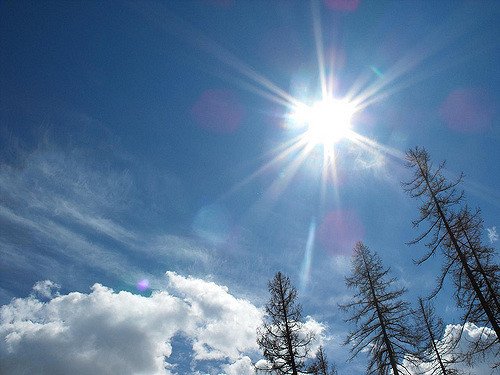
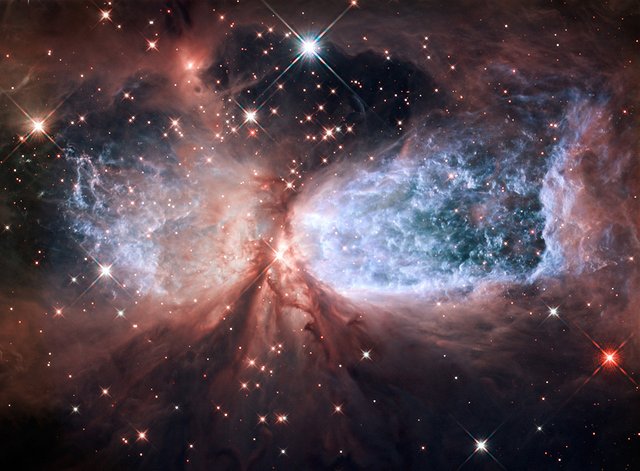
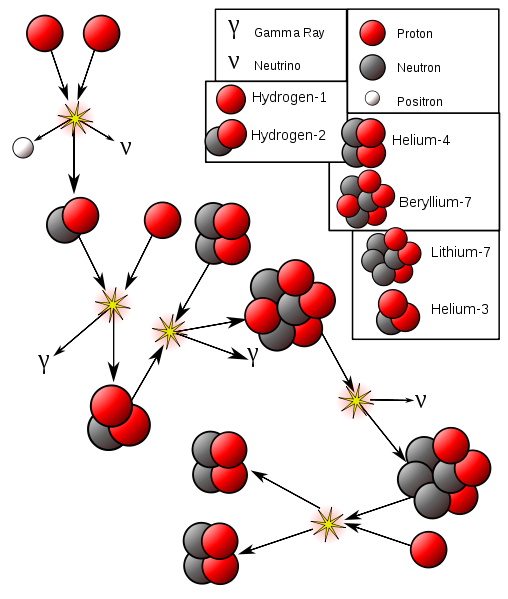
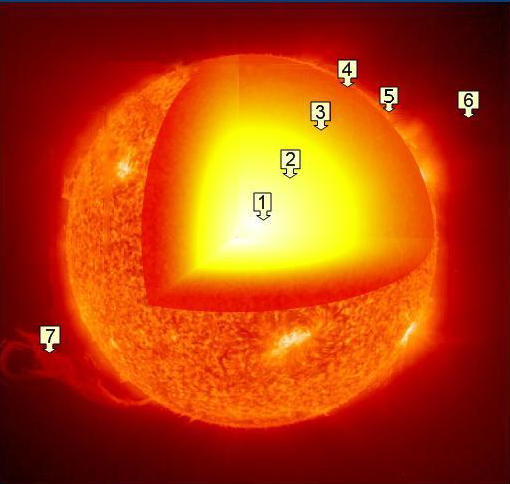
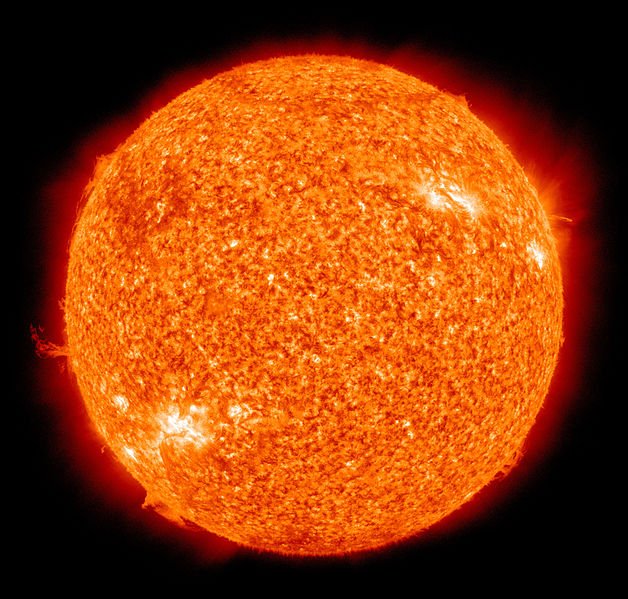

Definitely my best steemstem post this week. Educative to every category of person, catchy and easy to understand.
Definitely, I would. Read about it somewhere and taught in junior secondary.
Really amazing and suprising , this is a new fact, to me. I'll still, definitely check it out.
6×10¹¹kg is a large mass, of light gas hydrogen, compared to what you say can power a house. This definitely proves that all energy results from solar.
If the sun dies off, how'd it affect the solar system- gravity? Will those bigger stars replace it? Kindly elaborate.
Hi, the sun is the only star in our solar system. This means there are tons of other stars out there in the universe and some are way bigger than our sun.
This image below shows some of the other well-known stars and their relative sizes. the sun is tiny, somewhere there in the middle of the image. Maybe these stars might have their own solar systems too with planets. we've termed every other planet that isn't in our solar system as 'outer planets'
[Image: GiovanniMartin16 CC BY-SA 4.0.]
Since the sun is all we've got, there's no replacement for it if it dies. And dying means a lot of chaos for earth and the planets in the solar system. without the sun's energy-giving rays of light, earth would become dark without daylight and the atmosphere would be as cold as your deep freezer.
If it explodes into a supernova, however, the light would last for a couple of years and we would all be rotisseries on a spit. We'd roast from the immense radiation and heat that would bust our magnetosphere and wear out the ozone to reach us directly. It's game over.
I suggest you do more research on the question though. I found some reasonable articles on quora.
Thank you for reading.
Thank you @pangoli
You're welcome buddy
Congratulations! Your post has been selected as a daily Steemit truffle! It is listed on rank 1 of all contributions awarded today. You can find the TOP DAILY TRUFFLE PICKS HERE.
I upvoted your contribution because to my mind your post is at least 23 SBD worth and should receive 181 votes. It's now up to the lovely Steemit community to make this come true.
I am
TrufflePig, an Artificial Intelligence Bot that helps minnows and content curators using Machine Learning. If you are curious how I select content, you can find an explanation here!Have a nice day and sincerely yours,

TrufflePigThis post has been voted on by the steemstem curation team and voting trail.
There is more to SteemSTEM than just writing posts, check here for some more tips on being a community member. You can also join our discord here to get to know the rest of the community!
The sun simply is at the center of every thing in the solar system. The amount of energy generate by that giant star is just awesome. i really wish we could be able to harness more that we do from the sun.